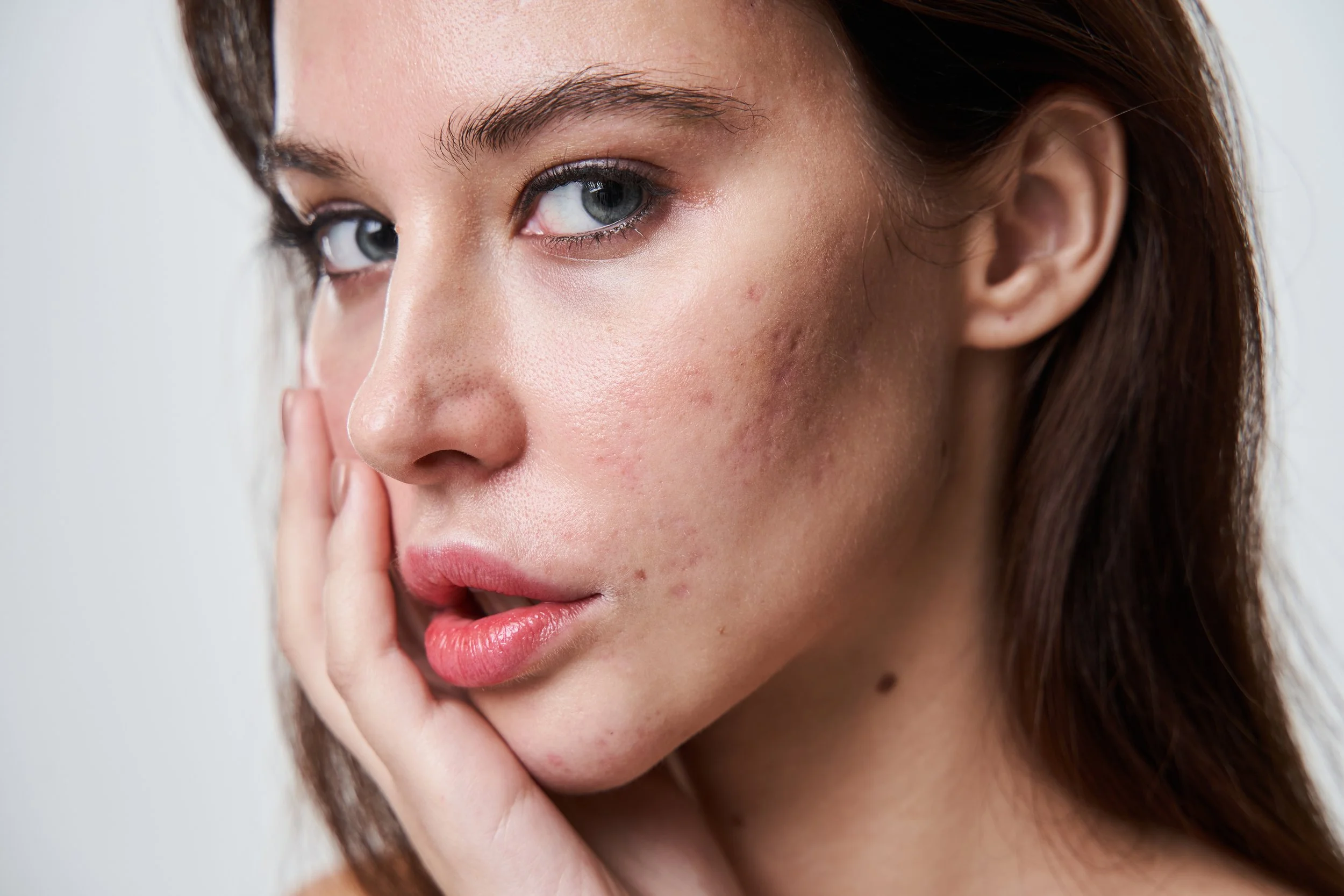Understanding Acne Scars: Types, Causes, and Treatments
Acne is a common skin condition that affects people of all ages, leaving a mark on both our appearance and self-esteem. While most acne breakouts heal over time, some may leave behind visible reminders in the form of scarring. Understanding acne scarring is essential for managing and treating it effectively. In this blog post, we will explore the differences between post-inflammatory hyperpigmentation and true acne scars, the role of skin type and genetics in scar formation, and the common areas prone to acne scarring.
Differentiating between Post-Inflammatory Hyperpigmentation and True Acne Scars.
When acne blemishes like pimples and cysts heal, they can cause colour changes on the skin, resulting in post-inflammatory hyperpigmentation (PIH) or true scars. Here's what you need to know:
Post-Inflammatory Hyperpigmentation (PIH): PIH appears as flat, discoloured spots after an acne lesion heals. It's more common in people with darker skin tones, with spots appearing darker or redder than the surrounding skin. The good news is that PIH is not a permanent scar and usually fades with proper care over time.
True Scars: True scars happen when the healing process disrupts collagen production in the skin. There are different types of true scars, such as icepick scars (narrow and deep pits), boxcar scars (broad depressions with sharp edges), and rolling scars (wave-like depressions on the skin). These scars are permanent and require specific treatments for improvement.
The Role of Skin Type and Genetics in Acne Scar Formation.
How our skin heals and regenerates can be influenced by factors like skin type and genetics. Here's how they play their part:
Darker Skin Tones and PIH: People with darker skin tones are more prone to PIH due to higher levels of melanin, which results in darker spots after the inflammation subsides.
Lighter Skin and True Scars: Lighter skin is more prone to true scarring than darker skin tones due to several factors. Skin with lighter pigmentation has a thin outer layer (epidermis), lower collagen and elastin levels, and visible blood vessels. These factors make pale skin more vulnerable to skin damage and scarring.
Genetics also plays a significant role, as some individuals have a natural tendency to scar more quickly than others.
Common Areas Prone to Acne Scarring.
Certain areas of the skin are more susceptible to acne scarring due to differences in skin thickness, sensitivity, and exposure to external factors:
Face - The face is particularly susceptible to acne and scarring. The cheeks, forehead, and jawline are frequent sites for acne and potential scarring.
Back - Acne on the back can be challenging to treat due to thicker skin in this area, potentially leading to more severe scarring.
Chest and Shoulders - These areas are also prone to acne breakouts and can lead to scarring, especially in those with severe acne issues.
Acne scars can be lingering reminders, but understanding their types and causes helps us maintain healthy skin. The ability to differentiate between post-inflammatory hyperpigmentation and true scars allows for personalized skincare treatments and preventative measures based on skin type and genetics.
When it comes to acne scarring, the good news is that there are several effective treatment options available to minimize the appearance of scars and improve overall skin texture.
Acne Hyperpigmentation Treatments
Chemical Peels: Chemical peels involve applying a chemical solution to the skin, exfoliating the outer layer and stimulating collagen production.
Microdermabrasion: This non-invasive procedure uses a device to exfoliate the outer skin layer, helping to reduce hyperpigmentation and promote skin renewal.
Laser Therapy: Various laser treatments, such as intense pulsed light (IPL) or fractional laser therapy, can target and break down excess melanin in the skin, reducing hyperpigmentation.
Microneedling: Microneedling can also benefit hyperpigmentation, as the controlled micro-injuries trigger the body's healing response and stimulate collagen production for a more even skin tone.
Acne Scar Treatment
Microneedling (Collagen Induction Therapy): Microneedling involves using fine needles to create controlled micro-injuries in the skin. This stimulates collagen production, promoting skin regeneration and reducing the depth of scars.
Dermal Fillers: Injectable dermal fillers, often based on hyaluronic acid, can be used to fill in depressed scars, making the skin surface smoother and more even.
Morpheus8: Combining microneedling with radiofrequency energy can enhance collagen production and skin tightening, improving the appearance of scars.
Laser Resurfacing: Laser resurfacing treatments remove the outer layer of damaged skin, stimulating collagen production and revealing healthier skin underneath, which can improve the appearance of certain acne scars.
Achieving healthier, radiant skin is within reach with the right approach and professional guidance. Restore your skin's beauty and boost your self-confidence with various treatment options, including chemical peels, microneedling, laser resurfacing, and dermal fillers, to get rid of acne scars.
Don't let acne scars and hyperpigmentation acne hold you back. Book your consultation today and take charge of your skincare journey.
New Client Skincare Consultation
Don’t know which treatment is ideal for your skin? Book a consultation with our acne specialist.

